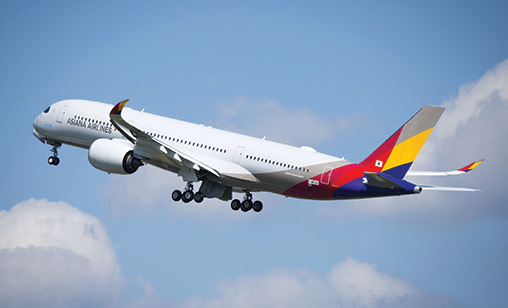News Backgrounder
Asiana restructuring must finally deliver
Decade-long high debt has increased borrowing costs and precluded network growth.
April 1st 2019
The ambulance siren is wailing at Asiana Airlines after an auditor disagreement saw accounts re-stated, the chairman departed and debt increases that triggered warnings. Read More » The questions are will the incidents be the impetus for long-awaited surgery at the carrier or will Asiana settle for more Band-Aid solutions to its problems.
Asiana has a second dilemma of balancing long-term strategy against creditor urgency. Asiana needs to grow and re-fleet, but CEO Han Chang-soo wrote to employees and said the airline would restructure by reducing routes and fleet size, with details to come. This would placate main creditor, the Korean Development Bank (KDB), a state-owned bank that often has rescued companies in the Kumho Asiana Group.
 |
Chairman Park resigned after a disagreement with auditors saw Asiana stock suspended and accounts re-stated with higher debt and a lower profit. Chairman Park is said to want to show accountability for the audit issue and also other matters so confidence can be restored in Asiana, the business he most likes. Some caution this is for show, pointing to Park resigning in 2010 and then re-joining the company.
Asiana needs to end a spiral of high debt that increases borrowing costs, generating more debt. Parent Asiana Kumho had sold assets, even the headquarters building. Asiana said it may IPO LCC Air Busan amongst other asset sales.
Han’s letter promised “bold innovation”. Asiana is caught between needing to grow but not having the cash to fund it. Lessors are increasingly worried, spooked by failures at Skymark and TransAsia. Asiana’s phase-out of Boeing aircraft is an opportunity for Airbus, but the airframer is worried its A350 and A380 may get caught up in Asiana’s woes.
Asiana is said to need a new management platform, one that has a sobering reckoning to confront problems. Han’s letter said there would be organisational restructuring, but Asiana’s previous management overhauls had minimal impact.
Lacking the right structure will prohibit fully realising new growth and inhibit correcting past decisions. Asiana’s network is over-weight on short-haul travel, where LCCs increasingly dominate. In only a few years, LCCs have come to fly more than half of the Korea-Japan market. Korea is seeing growth from Chinese airlines that are full-service but with lower cost bases. Seoul is expected to make LCCs the main beneficiary of forthcoming Chinese traffic rights.
Asiana’s LCC strategy has not fully delivered. Asiana took only a minority equity position in its first LCC, Air Busan. That was typical of the time but has since limited Asiana’s coordination. Asiana started a second LCC, Air Seoul, but the unit’s cost credentials are questioned due to factors including low-density seating and embedded in-flight entertainment.
Long-haul is too small at Asiana. This limits local traffic opportunities and also the ability to re-balance short-haul flying by generating connections. Australia and New Zealand are small opportunities, but probably still under-served. Europe is a large growth market but mainly held back by Russian over-flight rights.
North America is a stronger market, despite competition. Korea has open skies with Canada and the U.S. Korean Air is showing early gains in its joint venture with Delta Air Lines. Korean Air made yield and load factor gains well above average and anecdotal remarks are complimentary.
Asiana could turn to fellow Star Alliance member, United Airlines, which is said to have had warm feelings for Asiana for a long time but was waiting for Asiana to realise the opportunity from further collaboration. The two expanded their codeshare in 2017.
Asiana’s original plan for 2019 called for one passenger 747 and, also one 767 to exit the fleet while inducting four A350-900s, including one in storage in Toulouse. Fleet age also is weighed down by 777-200s and A330s.
Next-generation aircraft, which Asiana defined as A321neo and A350s, comprised 9% of the airline’s fleet in 2018 but would grow to a 49% share in 2023. Istanbul would go from four to six weekly flights and Paris would be increased from five weekly to daily, subject to air traffic rights.